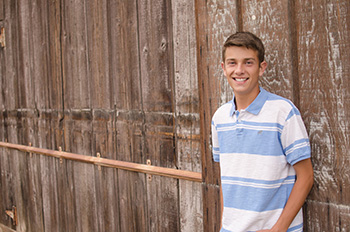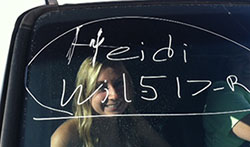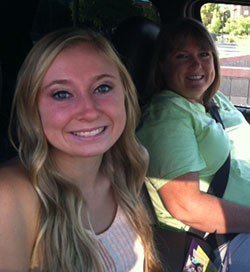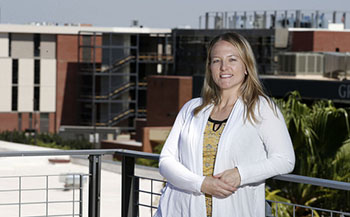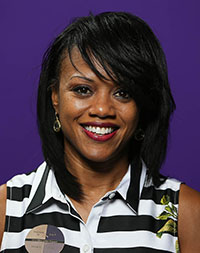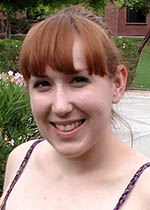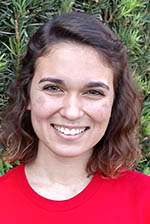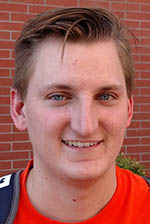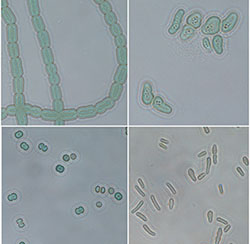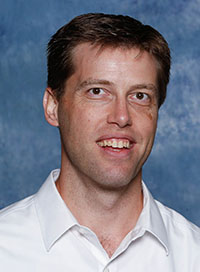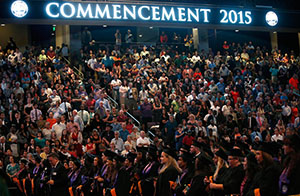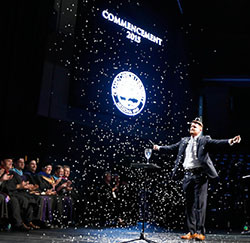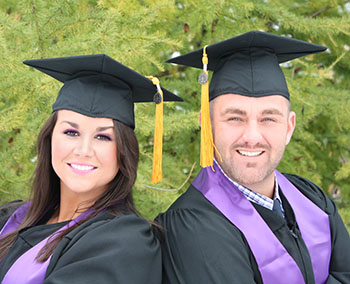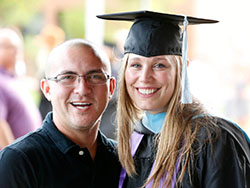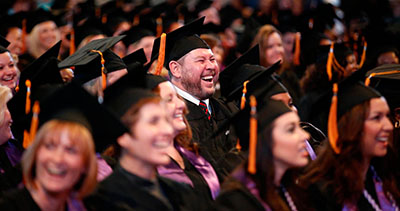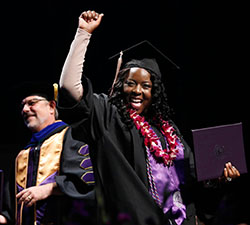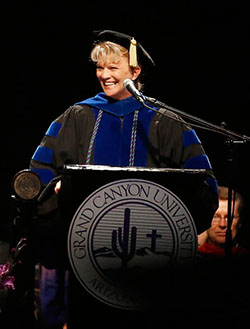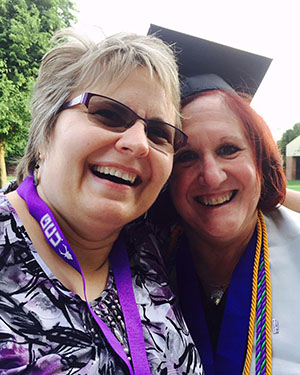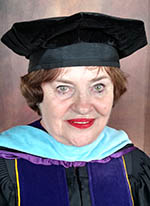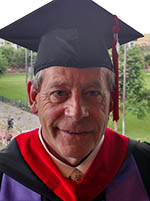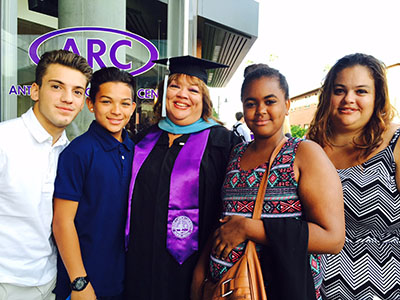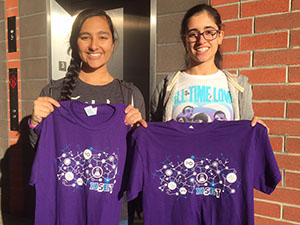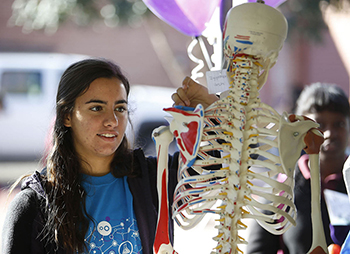Clik here to view.

Thousands of fresh-faced freshmen are starting classes Aug. 24 at GCU, raising ground enrollment to about 16,000 students, the largest ever. (Photo illustration by Billie Worth)
Stories by Janie Magruder
Photos by Darryl Webb
GCU Today Magazine
They are tomorrow’s electrical engineers and computer wizards, entrepreneurs and innovators, worship leaders and teachers, medical professionals and lawyers, musicians and thespians.
They will help solve global challenges, spread the Gospel, invent the next great thing and make their loved ones’ hearts burst with pride and joy.
They are a smart bunch with an incoming GPA of greater than 3.5, and so young, too: One in five is under 18 years old. They primarily hail from the western U.S. – Arizona, California, Colorado, Washington, Oregon and Hawaii – and while some literally are neighborhood kids, others were born far away, in South Korea and Nigeria.
They are our hope for the future. They will do great things at home and abroad. Welcome, Class of 2019. We’ve been preparing for you.
____
Aven Ault, 17
Hometown: Fresno, Calif.
Major: Biomedical engineering
From the moment the Ault family stopped by campus to visit a friend and hopped aboard the GCU welcome wagon (guided tour, purple T-shirts, free tickets to a men’s basketball game), they were sold.
“It was a whole cool adventure,” said Aven Ault, whose family rolled through Phoenix in their RV on the way home from a trip to Texas a couple of years ago and found themselves at a boisterous Arena event.
The thrill continues now for Ault, the Class of 2015 valedictorian at Clovis East High, where he also was the top player on the boys’ tennis team. And he’s recruited several friends from central California to GCU, including his roommate, Trevor McIntosh.
Phoenix’s heat might be an adjustment: Ault spent the summer at mile-high Hume Lake Christian Camp in California, leading devotions and recreation for hundreds of young campers. Serving the Lord always has been important to this son of missionary parents, who grew up in Spain making friends with the locals and becoming fluent in Spanish.
The GCU factor: The family loved campus so much that Ault’s stepmom, Colleen, applied for a job and was hired as a regional admissions representative in California.
____
Briana and Brian Norheim, 18
Hometown: Bermuda Dunes, Calif.
Majors: Nursing (Briana) and Biology (Brian)
Among the record six pairs of twins and 470 freshmen entering GCU’s Honors College this fall are Briana Norheim and her one-minute-younger brother, Brian. They have a yin and yang that is both fiercely competitive and sweetly protective.
Clik here to view.
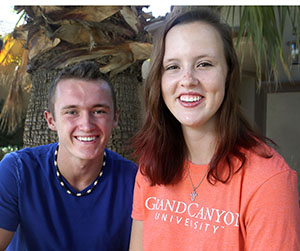
Brian and Briana Norheim
The competition shows up mostly on the basketball court, where Briana and Brian have bounced around together since they were old enough to walk. Briana played on her brother’s team in middle school because there was no girls’ team, and both were multiyear captains of their respective teams at Desert Christian Academy near their home in Bermuda Dunes, Calif.
Both played piano and were in AP and honors classes during high school. Briana also packed in volleyball and cheer, while Brian was drawn to ministry in the academy’s elementary school.
They each describe themselves as hard working, but she is positive, energetic and persistent while he is more strong-willed and dedicated.
Her favorite Bible verse is Galatians 6:9: “Let us not become weary in doing good, for at the proper time we will reap a harvest if we do not give up.” His is Romans 8:37-39: “… neither death nor life, neither angels nor demons, neither the present nor the future, nor any powers, neither height nor depth, nor anything else in all creation, will be able to separate us from the love of God that is in Christ Jesus our Lord.”
“We complement each other very well,” Briana said. “Whatever I’m weak in (math), he’s very strong in, and whatever I’m strong in (English and history), he’s not.”
Clik here to view.
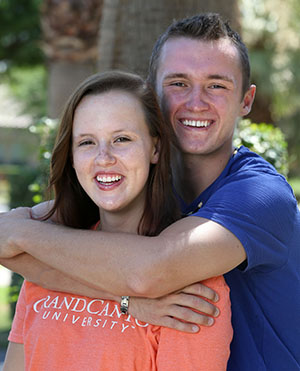
Briana and Brian Norheim
Briana chose nursing but has not ruled out becoming a teacher because she wants to make a difference in people’s lives. Brian plans to become a doctor and has heard about the hands-on opportunities that pre-med students have in GCU’s cadaver labs and on medical mission trips around the world. He is interested in pursuing orthopedics in mission work, if that’s where God calls him.
The twins have been in the same classes at the same school all their lives, and when they began to think about college, Briana initially was open to being at a different place than her brother.
“One of the main reasons she wants me to go to the same college is to help her in math,” Brian joked. To which Briana replied, “God gave me a math tutor.”
And it’s not as if the twins won’t know anyone at GCU: one quarter of their 32-member graduating class is enrolled, too. Still, watching out for each other will be a priority.
“Briana is a strong woman of faith, and if I need her she’ll be there for me. She would drop whatever she’s doing,” he said. “I’m blessed to have a twin sister.”
The GCU factor: “Our parents are very secure in how the campus is and with how affordable it is, and I think GCU will provide more opportunities than other colleges could provide,” Brianna said. Added Brian, “I have a great opportunity to do well as I prepare for med school and become a doctor.”
____
Denisse Delos Santos, 18
Hometown: Phoenix
Major: Electrical engineering
Clik here to view.
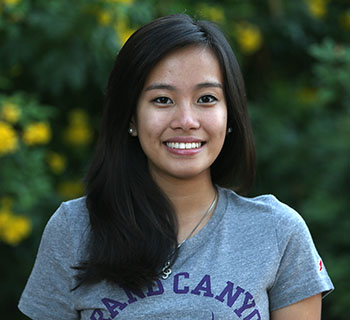
Denisse Delos Santos
But for that one B, in Spanish, Denisse Delos Santos would have a 5.0 GPA. The Class of 2015 valedictorian at North High in Phoenix, who took four years of the boot camp equivalent of learning — International Baccalaureate — had to settle for a 4.92.
Delos Santos insisted she’s not that smart.
“I’m just really determined when it comes to work. It runs in my family,” she said. The tests, essays and homework at North were a grind, but she refused to be one-note. Choir, playing piano and guitar and drama were mixed in with U.S. history, pre-calc and physics.
Delos Santos, who was born in San Pablo, the Philippines, chose electrical engineering because her father, a teacher, is a “frustrated engineer” who couldn’t afford to follow his dreams. “I said, ‘OK, Dad, I’m going to finish your dream off for you.’”
The GCU factor: I’m really excited to be in the first class of engineers. We’re making history. We’re the first to be in the new building and classrooms, and whatever we do, the next class will have to follow us.”
____
Easton Barbour, 18
Hometown: Hershey, Pa.
Major: Christian studies
Clik here to view.
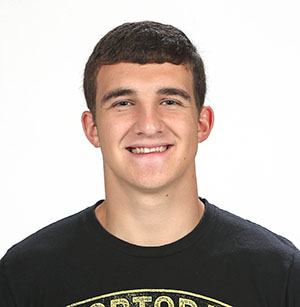
Easton Barbour
From a ready smile to the “I am Second” bracelet to his confident stride, Easton Barbour has the countenance of a young pastor.
“I’m hard-wired for the ministry, especially for fellowship and discipleship. I don’t have a passion for anything else,” he said.
When Barbour’s parents moved their family from North Carolina to Gilbert in 2011, it was a faith wakeup call. His new school, Basha High in Chandler, had more than 2,500 students, and Barbour felt a bit lost.
He joined the school soccer team and tackled the books, finishing with a 4.75 GPA and amassing more than 30 required college credits.
“I took AP classes so I wouldn’t have to take them later,” he said. “I wanted to focus on Christian studies.”
Barbour has taught children and teens at Mission Community Church and co-founded Basha’s chapter of Fellowship of Christian Athletes. He recently spent three weeks in Europe, a pack on his back and God on his heart and lips.
The GCU factor: “I wanted to stay local for college because I want to stay connected to my church and keep those relationships.”
____
Hope Tedrow, 18
Hometown: Gilbert, Ariz.
Major: Psychology
Clik here to view.

Hope Tedrow
“Well-rounded” comes to mind when thinking of Hope Tedrow:
• Voracious reader with early preferences, Clifford and Junie B. Jones, edged out by current favorites, Karen Kingsbury and Michael Crichton
• Singer who performed with a show choir in Hollywood
• Fluent Spanish speaker
• Visitor to the equator
• Co-valedictorian of the Gilbert High Class of 2015, with a GPA of 4.79
“I’m not a natural genius,” she said. “I’m pretty good at organizing my time to get my work done.”
The proof: She completed her freshman year of college, with 15 AP credits and one semester of dual enrollment, while in high school. Tedrow enters GCU with 35 college credits and a blank canvas on which to paint her future. She’s interested in how the mind works, maybe counseling or law.
Intramural volleyball and the Learning Lounge at GCU also have enlarged her sphere of interest.
The GCU factor: “My best friend since I was 6 goes there, and I like the smaller class sizes and the fact that there are tons of options — if I ever change my mind.”
____
Joey Bombaci, 18
Hometown: Phoenix
Major: Digital design
Clik here to view.
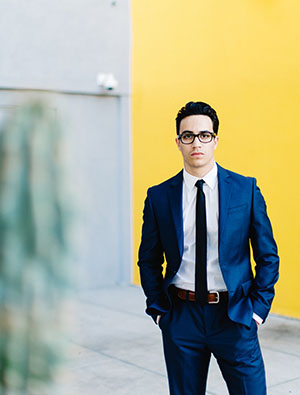
Joey Bombaci
Joey Bombaci grew up drawing anything with wheels or wings and playing ice hockey. When his parents suggested he pick art or sports, Bombaci hung up his skates and sharpened his pencils.
As a sophomore at Sandra Day O’Connor High in Phoenix, he was part of a team whose designs were among the top 50 in Vans Custom Culture, a national contest that inspires teenagers to embrace their creativity using the blank canvas of blank canvas shoes.
Bombaci pursued a job at a local Vans, not to perfect the art of selling apparel, but to learn the process of design. His creativity landed on the radar of Steve Van Doren, son of Vans co-founder Paul Van Doren, who sent Bombaci a pair of size 66 blank canvas high-tops to customize for display in the Cypress, Calif., corporate office. Bombaci has since personalized more than a dozen pairs of Vans for friends and is looking forward to exploring digital design at GCU.
The GCU factor: “I want to use my art to show a dark but creative world that there is light, and that light is God.”
____
May Carreon, 18
Hometown: Phoenix
Major: Business management
Clik here to view.
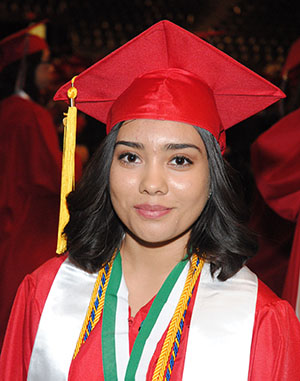
May Carreon
GCU has been a part of May Carreon’s life since grade school. She grew up eight blocks away, never missing a Fall Festival or Christmas party on campus and dreaming of being the first person in her family to go to college, in her very own community.
But money was tight, and Carreon realized during her senior year at Alhambra High that she was responsible for her future. Her math teacher directed her to the University’s Learning Lounge for pre-calculus tutoring, and Carreon sought its help in writing applications for college scholarships. She enrolled in GCU’s “Jump Start to Jobs,” coming to campus on Saturdays to build her resume and practice job interview skills. Carreon had never before held a job.
Her initiative succeeded: a full-ride scholarship from the Colangelo College of Business and a paid summer internship at Wells Fargo. Carreon has her sights on landing Jerry Colangelo as her mentor. Bank on it.
The GCU factor: “I consider it part of my family. I’ve known it since I was little. This is my second home.”
____
Kara Sutton, 18
Hometown: Charlotte, N.C.
Major: English for secondary education
Kara Sutton didn’t move to Phoenix in the most climate-friendly month — June — but she couldn’t be coming to GCU at a better time.
Clik here to view.
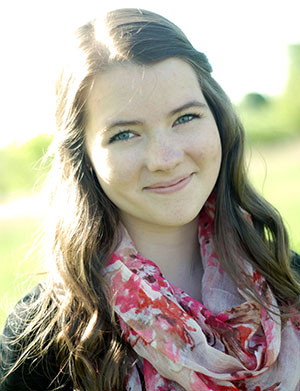
Kara Sutton
Sutton has plenty of speech and debate experience as a teacher of younger students and a participant in the National Christian Forensics and Communications Association. Members of GCU’s speech and debate team this spring won for the second consecutive year national titles in individual events at the National Christian College Forensics Invitational.
Sutton, who was homeschooled, doesn’t know if God will lead her to teach in a public or private high school or a university. But she’s certain she’s been called to share her Christian worldview through teaching.
“It may not be rewarding as far as pay goes, but the rewarding part for me was getting to see the students grow,” she said. “It’s a blessing to see students who at first dreaded giving speeches be so much more comfortable by the end.”
The GCU factor: Sutton wants to explore GCU’s global mission program. Her heart was captured by a February journey to China to minister in a nursery for babies abandoned because of their disabilities.
____
Rilynn Hansen, 18
Hometown: Grants Pass, Ore.
Major: Communications
Rilynn Hansen was a high school freshman in 2011 when she and her sister, Morgan, won first place in a national Future Business Leaders of America contest for their financial plan on a mock business. No other Oregon ninth grader had ever done that.
Clik here to view.
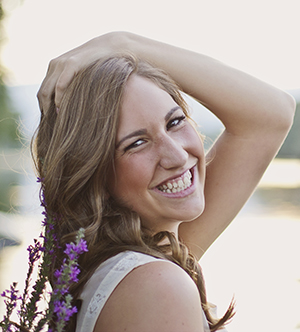
Rilynn Hansen
Hansen again wowed FBLA judges at the 2012 nationals, earning another blue ribbon for a real community service project. She and other students at Hidden Valley High launched the Josephine County Foundation in a region plagued by higher child poverty and unemployment rates and lower high school graduation and college achievement.
“We wanted to do something real. We saw our county struggling and we wanted to make a difference,” she said.
Hansen became proficient at grant writing and building relationships. The nonprofit began with community vision clinics, where 200 pairs of used glasses were handed out to low-income people.
Hansen’s newest FBLA national project was Youth Education Success, a partnership with a local television station that made 11 grants to area teachers. They purchased heart-rate monitors for PE classes and ceramic kilns for student artists and established a life-skills garden and dental clinic, among other services. The GCU factor: “Everyone seems so friendly, and the campus looks like a resort.”
Additional photography by Keith Alstrin and Karalyn Stairs
Contact Janie Magruder at 602-639-8018 or janie.magruder@gcu.edu.
The post Hello, my name is: GCU Class of 2019 appeared first on GCU Today.
